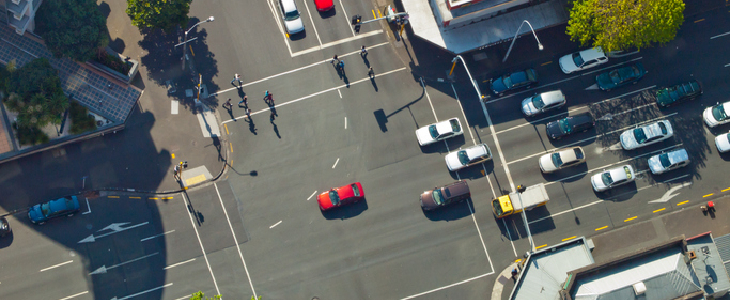Intersections are one of the most hazardous parts of our roads, where the meeting of vehicles traveling in different directions increases the risk of accidents. When collisions occur at intersections, the consequences can be severe, resulting in a range of injuries that may have long-lasting effects on victims’ lives.
Medical bills and lost wages will be covered through no-fault insurance, but it is imperative that your application for benefits be filed within 30 days of the accident. That is why we will file your application free of charge.
Here are common injuries sustained in intersection collisions and how you may be able to seek justice and compensation.
1. Whiplash and Neck Injuries
Whiplash is a prevalent injury in rear-end collisions at intersections, where one vehicle strikes another from behind. This rapid back-and-forth motion of the neck can cause strain or damage to the soft tissues, muscles, and ligaments in the neck, leading to pain, stiffness, and decreased mobility. In severe cases, whiplash can result in chronic neck pain and even nerve damage.
2. Head and Brain Injuries
Intersection accidents often involve high-impact collisions, increasing the risk of head injuries for drivers and passengers. Traumatic brain injuries (TBIs) can occur when the head strikes the steering wheel, dashboard, or other interior surfaces of the vehicle. TBIs range from mild concussions to severe brain damage, with symptoms including headaches, dizziness, confusion, and cognitive impairments. These injuries can have profound effects on victims’ lives, requiring extensive medical treatment and rehabilitation.
3. Spinal Cord Injuries
Intersection accidents can also cause spinal cord injuries, which may result from the force of impact or the sudden jolt experienced during a collision. Damage to the spinal cord can lead to paralysis, loss of sensation, and impaired motor function below the site of injury. Victims of spinal cord injuries may require lifelong medical care and assistance with daily activities, significantly impacting their quality of life and financial stability.
4. Fractures and Orthopedic Injuries
The force of a collision at an intersection can cause fractures and orthopedic injuries to the bones and joints of the body. Common injuries include broken bones in the arms, legs, ribs, and pelvis, as well as dislocations and ligament tears. These injuries often require surgery, immobilization, and physical therapy to promote healing and restore function. Victims may experience chronic pain, reduced mobility, and long-term disability as a result of these injuries.
5. Soft Tissue Injuries
Soft tissue injuries, such as sprains, strains, and bruises, are common in intersection accidents due to the sudden and forceful movements of the body during a collision. These injuries can affect the discs of the spine and muscles, tendons, and ligaments throughout the body, causing pain, swelling, and a limited range of motion. While soft tissue injuries may not always be immediately apparent, they can cause significant discomfort and impairments in the days and weeks following an accident.
The Attorneys at Civardi & Obiol Help Those in New York Who Have Been Injured in Car Accidents
If you or a loved one has been injured in a car accident, it’s crucial to seek immediate medical attention and to understand your rights and the potential legal remedies available to you. A knowledgeable and experienced personal injury attorney can advocate for justice. At Civardi & Obiol, our qualified New York personal injury attorneys will help walk you through the process every step of the way. To learn more or schedule a free consultation, contact us today!

